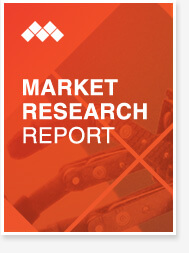Unlock Recent Trends in the Agriculture Analytics Market
Over the course of the projection period, the size of the worldwide agriculture analytics market is anticipated to increase at a Compound Annual Growth Rate (CAGR) of 13.1%, from USD 1.4 billion in 2023 to USD 2.5 billion by 2025. Crop management, irrigation, and livestock monitoring are just a few of the agricultural analytics' key driving forces. These and other data-driven tools for decision-making offer insightful information and assist optimize farm operations.
Emerging trends in the global Agriculture Analytics Market reflect advancements in technology, increasing demand for data-driven decision-making, and the need for sustainable agricultural practices. Here are some key trends:
- Precision Agriculture
- Artificial Intelligence and Machine Learning
- Big Data Analytics
- Blockchain Technology Blockchain Technology
- Sustainability and Climate-Smart Agriculture
- Cloud Computing
- Integration with Mobile Technology
- Government and Private Sector Collaboration
These trends indicate a rapidly evolving landscape where technology and data analytics are transforming traditional agricultural practices, leading to increased efficiency, productivity, and sustainability in the agriculture sector.
To know about the assumptions considered for the study download the pdf brochure
Precision Agriculture:
- IoT and Sensor Integration: The use of IoT devices and sensors for real-time data collection on soil health, weather conditions, and crop growth is becoming more prevalent, enabling farmers to make precise decisions.
- Drone and Satellite Imagery: High-resolution imaging and remote sensing technologies provide detailed insights into crop health, soil conditions, and field variability, facilitating targeted interventions.
Artificial Intelligence and Machine Learning:
- Predictive Analytics: AI and ML algorithms analyze historical data and current conditions to forecast crop yields, pest infestations, and weather patterns, allowing for proactive management.
- Automation and Robotics: AI-driven automation systems are being used for tasks such as planting, watering, and harvesting, reducing labor costs and increasing efficiency.
Big Data Analytics:
- Data Integration and Management: The consolidation of diverse data sources, including weather data, market trends, and agricultural practices, into centralized platforms for comprehensive analysis.
- Real-Time Decision Support Systems: Advanced analytics platforms offer real-time insights and recommendations, helping farmers optimize inputs and improve productivity.
Blockchain Technology:
- Supply Chain Transparency: Blockchain is used to track and verify the provenance of agricultural products, enhancing transparency and trust in the supply chain.
- Smart Contracts: Automating transactions and ensuring compliance with agreed-upon terms, reducing fraud and improving efficiency in agricultural trade.
Sustainability and Climate-Smart Agriculture:
- Carbon Footprint Reduction: Analytics help in measuring and managing the carbon footprint of agricultural activities, promoting sustainable practices.
- Resource Optimization: Efficient use of water, fertilizers, and pesticides through data-driven insights helps in conserving resources and reducing environmental impact.
Cloud Computing:
- Scalable Infrastructure: Cloud-based platforms provide scalable and cost-effective infrastructure for storing and processing large volumes of agricultural data.
- Remote Access: Farmers can access analytics tools and insights from anywhere, facilitating better management of distributed farming operations.
Integration with Mobile Technology:
- Mobile Applications: Increasing use of mobile apps to deliver analytics and insights directly to farmers’ smartphones, enabling them to make timely decisions in the field.
- User-Friendly Interfaces: Development of intuitive and easy-to-use interfaces to ensure that advanced analytics are accessible to farmers with varying levels of technical expertise.
Government and Private Sector Collaboration:
- Policy Support and Funding: Governments and private entities are investing in agricultural analytics to boost productivity, ensure food security, and promote sustainable practices.
- Public-Private Partnerships: Collaborations between public institutions and private companies are driving innovation and the adoption of advanced analytics in agriculture.
Related Reports:
Agriculture Analytics Market by Offering (Solution and Services), Agriculture Type (Precision Farming, Livestock Farming, Vertical Farming), Technology (Remote Sensing, GIS, Robotics, Automation), Farm Size, End Users and Region - Global Forecast to 2028
This FREE sample includes market data points, ranging from trend analyses to market estimates & forecasts. See for yourself.
SEND ME A FREE SAMPLE





